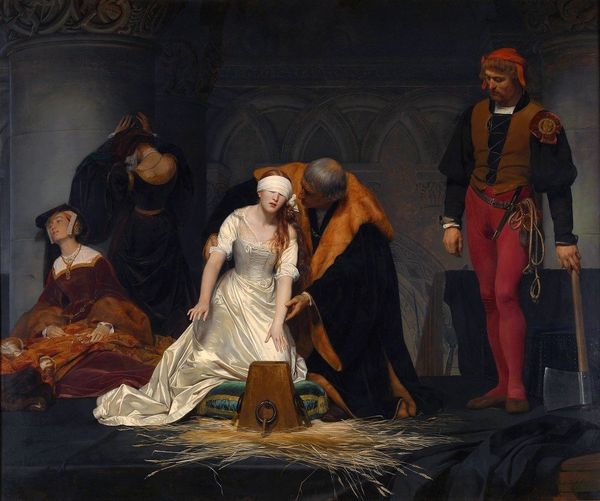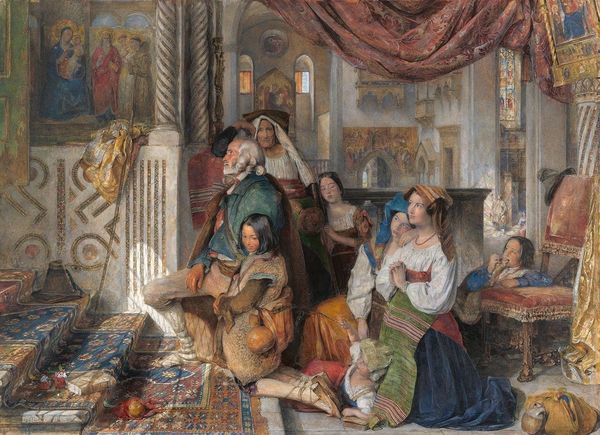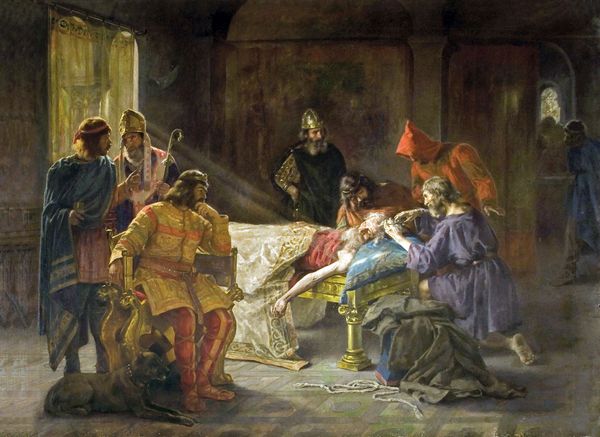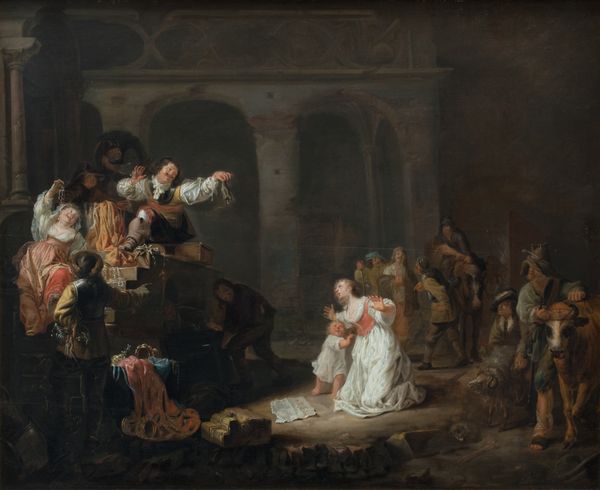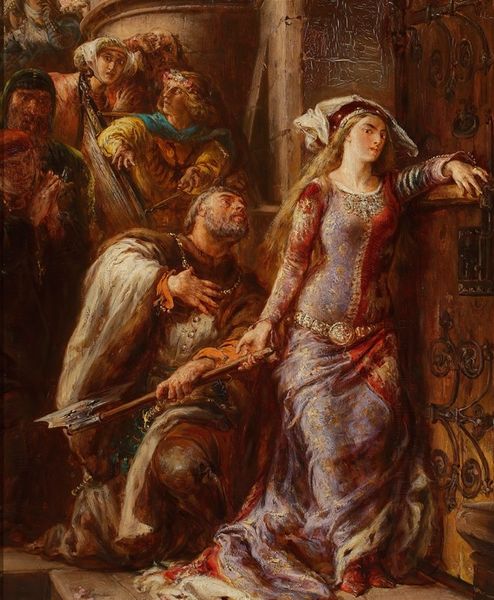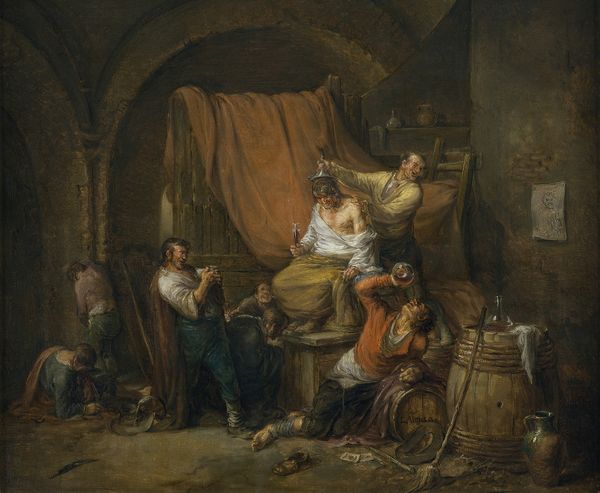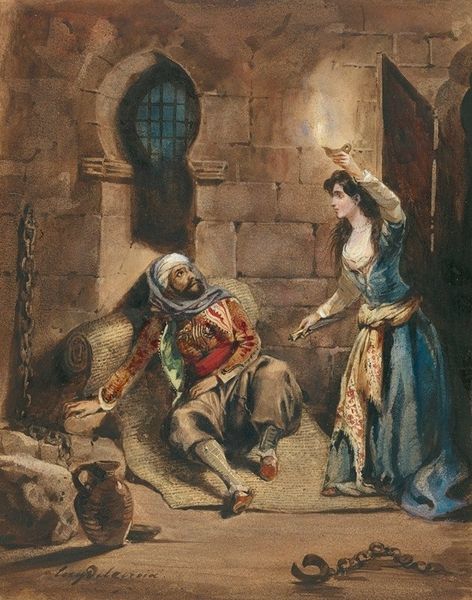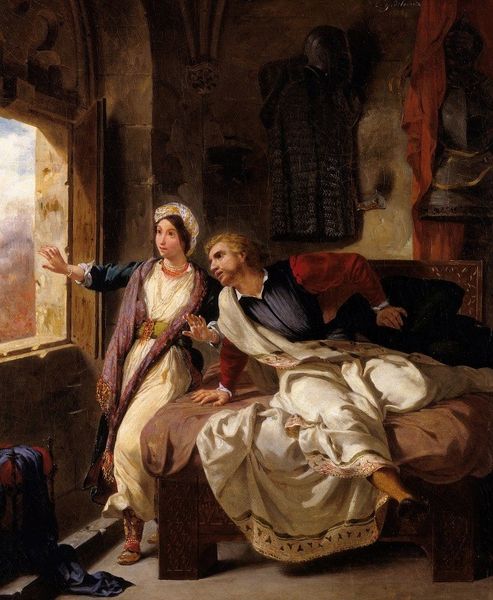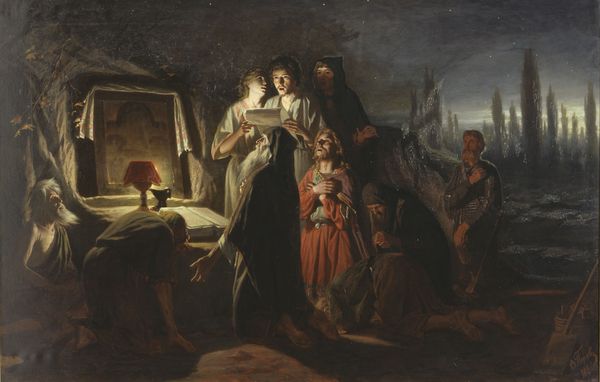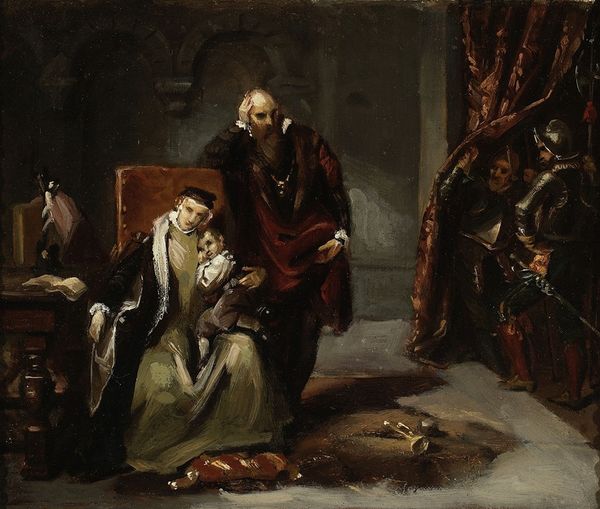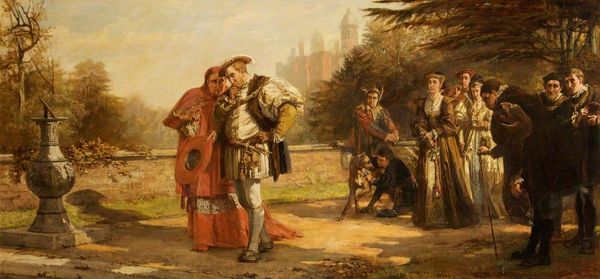
Copyright: Public domain
Curator: William Holman Hunt created this oil painting, "The Eve of Saint Agnes," in 1857. The scene depicts a tense moment from John Keats's poem of the same name, exhibited right here at the Walker Art Gallery. My first impression focuses on the rather shocking disarray, the prostrate figures foregrounded against what is ostensibly a clandestine meeting. Editor: I am immediately drawn to the central couple’s defiance. Against this backdrop of what looks like senseless, drunken debauchery, a love affair is not just surviving; it’s escaping. I'm intrigued how Hunt juxtaposes societal breakdown with individual agency, using Keats's text. Curator: Structurally, that division is quite deliberate, isn't it? Note how the strong diagonal lines created by the man’s pose and gaze contrast with the curved forms and slump of the other bodies in the painting. He acts as a beacon that illuminates this escape—with a vanishing point right off-canvas! The curtain functions almost as a fourth wall. Editor: Precisely, and if we delve into that debauchery a little more, it’s difficult not to recognize the scene as an analogy for so many abuses of power that permeated British social stratification. Those discarded wine jugs, broken drinking horns, and drowsing hounds reflect unchecked male privilege and entitlement, especially as underscored in Keats' original narrative. Curator: True, though consider how carefully Hunt composes the lighting. Observe the chiaroscuro effects— the faces are subtly highlighted to emphasize their emotional distress and resolve against the shadowy revelry. This is intensified by his expert application of glazing which seems to heighten texture throughout. Editor: The details are stunning, undeniably. And I see Keats is actively critiquing similar types of feudal excess in his longer poem while questioning women's roles at the time. Notice that our heroine guides the action and literally tugs the hero. Is that a veiled act of empowerment? The composition makes them an active duo while setting apart their shared commitment against widespread decadence. Curator: Looking past any specific references, this pre-Raphaelite fascination with Keats speaks volumes regarding artistic priorities; for Hunt, Keats' poem provides the vehicle, yes, but one can argue the artist privileges compositional elements that highlight aesthetic purity. Editor: Perhaps. But for me, Hunt also critiques a society that so often renders women powerless, especially regarding personal destiny. To recognize Keats' poem as a story about personal freedom—albeit against bleak odds—this becomes something profoundly moving even now. Curator: Well, I still can't shake the feeling this primarily shows Hunt as a brilliant technical virtuoso. Editor: While that might be the point from where you're standing, I am convinced the Pre-Raphaelites always wanted art to matter to be socially engaging on its own terms.
Comments
No comments
Be the first to comment and join the conversation on the ultimate creative platform.

